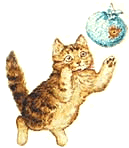http://www.asyura2.com/15/nature6/msg/521.html
| Tweet |
(回答先: 福島第一原発の近くに生息するサルの血球数が少ない:Blood changes in 投稿者 手紙 日時 2017 年 3 月 23 日 21:50:34)

件名:福島で採取された放射性物質を摂取したチョウに影響が確認された
日時:20140515
媒体:Scientific Reports
出所:http://www.natureasia.com/ja-jp/research/highlight/9275
-----
【環境】福島で採取された放射性物質を摂取したチョウに影響が確認されたブックマーク
Scientific Reports
2014年5月15日
Environment: Ingesting radioactive materials from Fukushima impacts butterflies
東京電力福島第一原子力発電所の周辺地域で放射性物質の含まれた植物材料を採取し、それをチョウの幼虫に与えたところ、異常と早期死亡を起こしやすくなった。この新知見を報告する論文が、今週掲載される。
2011年3月の福島第一原子力発電所の事故で、大量の放射性物質が環境中に放出された。これまでの研究では、こうした放射性物質に曝露したヤマトシジミ(Zizeeria maha)が生理的、遺伝的影響を受ける可能性が示されていた。今回、大瀧丈二(おおたき・じょうじ)たちは、福島県内の汚染地域の放射性物質がヤマトシジミの一生における放射性核種の摂取量にどのように寄与し、どのような生物学的影響を及ぼすのかを調べた。今回の研究では、放射性物質の含まれた植物材料を福島県内の複数の地点で採取して、沖縄に生息するヤマトシジミの幼虫に与える実験が行われた。(沖縄県は、福島県の約1,000マイル(約1,600キロメートル)南方に位置している。)
その結果、福島第一原発から放出された人工セシウムを比較的少量含んだ葉を摂取したヤマトシジミの生存、成長と発達に計測可能な影響が生じた。今回の研究で得られた知見が、他の生物にとってどのような意味を持つと考えられるのかという点については、さらなる研究が必要となる。
DOI:10.1038/srep04946 | 英語の原文
「Nature 関連誌注目のハイライト」は、ネイチャー広報部門が報道関係者向けに作成したリリースを翻訳したものです。より正確かつ詳細な情報が必要な場合には、必ず原著論文をご覧ください。
-----
//memo
*The biological impacts of ingested radioactive materials on the pale grass blue butterfly
http://www.nature.com/articles/srep04946
:Abstract
A massive amount of radioactive materials has been released into the environment by the Fukushima Dai-ichi Nuclear Power Plant accident, but its biological impacts have rarely been examined. Here, we have quantitatively evaluated the relationship between the dose of ingested radioactive cesium and mortality and abnormality rates using the pale grass blue butterfly, Zizeeria maha. When larvae from Okinawa, which is likely the least polluted locality in Japan, were fed leaves collected from polluted localities, mortality and abnormality rates increased sharply at low doses in response to the ingested cesium dose. This dose-response relationship was best fitted by power function models, which indicated that the half lethal and abnormal doses were 1.9 and 0.76 Bq per larva, corresponding to 54,000 and 22,000 Bq per kilogram body weight, respectively. Both the retention of radioactive cesium in a pupa relative to the ingested dose throughout the larval stage and the accumulation of radioactive cesium in a pupa relative to the activity concentration in a diet were highest at the lowest level of cesium ingested. We conclude that the risk of ingesting a polluted diet is realistic, at least for this butterfly, and likely for certain other organisms living in the polluted area.:
|
|
|
|
- 福島原発事故後のプルトニウム放出を示す証拠:DNPP accident 手紙 2017/3/23 22:10:45
(0)
投稿コメント全ログ コメント即時配信 スレ建て依頼 削除コメント確認方法
▲上へ ★阿修羅♪ > 環境・自然・天文板6掲示板 次へ 前へ
|
|
 スパムメールの中から見つけ出すためにメールのタイトルには必ず「阿修羅さんへ」と記述してください。
スパムメールの中から見つけ出すためにメールのタイトルには必ず「阿修羅さんへ」と記述してください。すべてのページの引用、転載、リンクを許可します。確認メールは不要です。引用元リンクを表示してください。